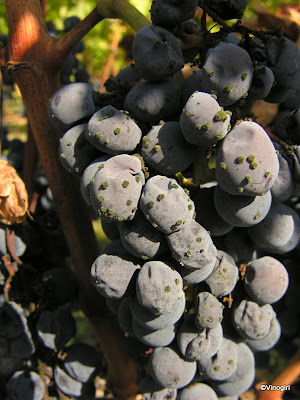
Concrete tanks as fermentors and aging vessels are not a totally unheard of trend in Napa winemaking, so I am not reporting anything new. However, it was only until this past week that I was able to get up close and personal to a clutch of 150 gallon egg shaped tanks at a local custom crush facility.
The Romans, some 2000 years ago, used concrete platforms on which to process grapes for winemaking and may have even used concrete tanks for fermenting wine. Clever chaps those Romans - look how they perfected the use of concrete for the unreinforced, coffered concrete dome of the Pantheon in Rome - just brilliant. To this day, there are wineries in the Napa Valley that have never used anything but concrete fermentors: just visit Mayacamas Vineyards during harvest to see their large concrete tanks in action.
Up until fairly recently, the majority of concrete tanks being used in the US were produced in France, Burgundy to be exact. Now, however, a California manufacturer using innovative technology has designed a superior egg with an improved concrete composition. Sonoma Cast Stone, a concrete company located in that other valley (in the town of Petaluma, coincidentally once known as the Egg Capital of the World), has true to American ingenuity, engineered a nifty new take on the egg. Any interested party can purchase an egg in one of eight designer colours. How Californian is that? The outfit has even added a pomace port for ease of cleaning which was a major complaint about the French-made eggs.
The pros and cons of fermenting in concrete? On the pro side; low temperature fermentations, elevated fruit notes, richer aromatics, and breathability. On the con side; excess aeration (breathability, anyone?), sanitation, and the possibility of contamination from spoilage microbes e.g. Brettanomyces. Perhaps laughably, a Monsieur Marc Nomblat, of the French firm ETS Nomblat SAS, has been quoted as saying "nobody had Brett problems with our concrete tanks." Titter, titter!
Vinomaker and I have not yet tried a wine that has been produced in a concrete fermentor, so we have no personal experience with the end result, although
Chronic Cellars 2010 Stone Fox is on my radar.
To ferment in cement? That is the question.

















































